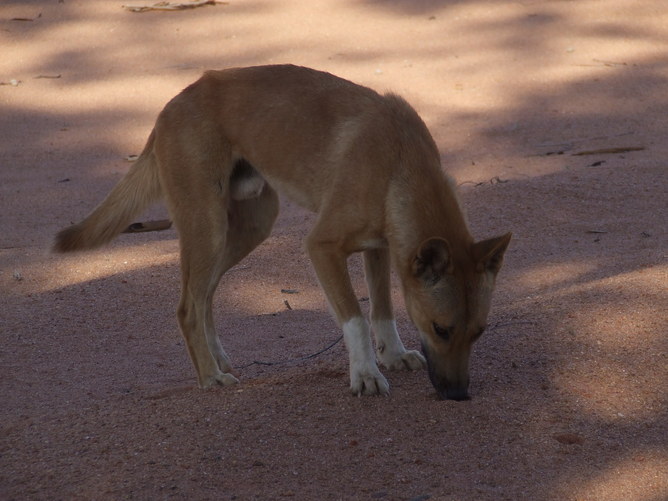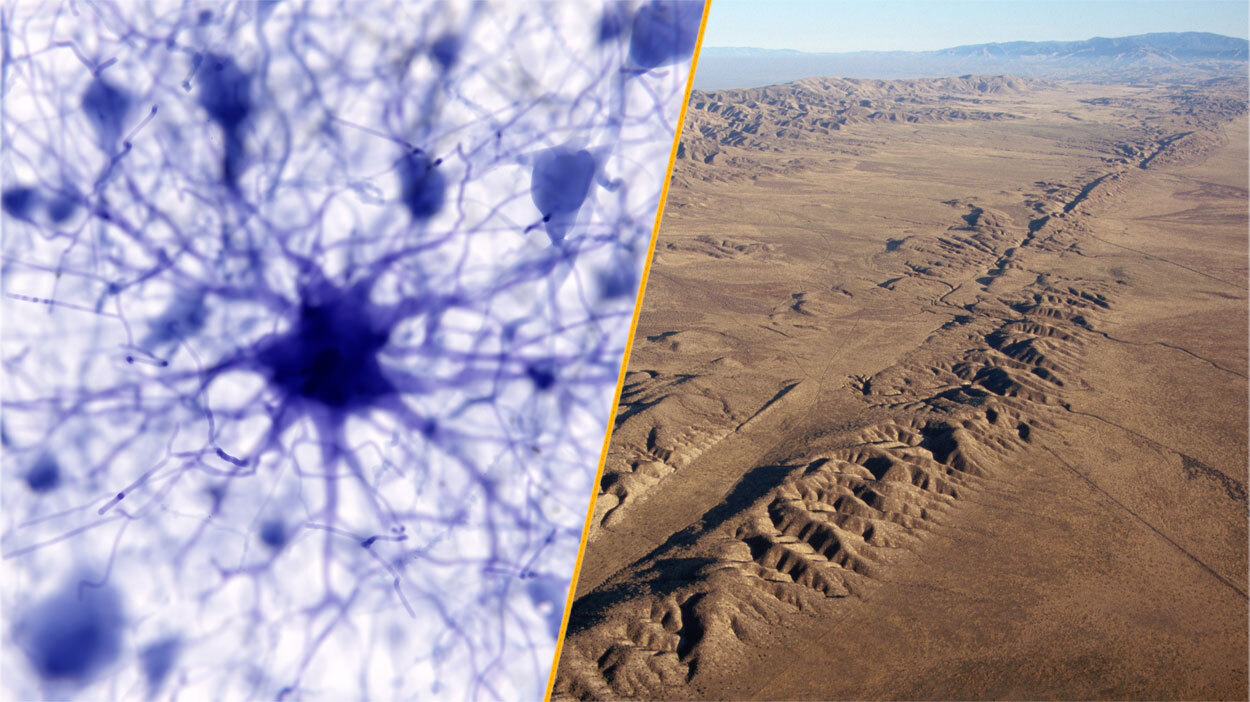Facts about dingoes

Dingoes are wild canines found primarily in Australia, though some scattered groups have been located in Southeast Asia as well. They were introduced to the island continent over 3,500 years ago, but the animal's exact origin is in dispute.
For centuries, the scientific consensus has been that the dingo arrived in Australia with Asian seafarers, according to Laurie Corbett, author of "The Dingo in Australia and Asia" (Cornell, 1995). However, a 2011 study published in the journal Proceedings of the Royal Society B proposed that the dogs walked across a land bridge much earlier, anywhere between 18,300 and 4,600 years ago.
Dingo size
Dingoes are medium-size dogs — 3.5 to 4 feet (1.1 to 1.2 meters) long from head to tail. The tail adds another 12 to 13 inches (30 to 33 centimeters) to their length. Typically, dingoes weigh 22 to 33 pounds (10 to 15 kilograms), according to National Geographic, and males are usually larger than females.
Most dingoes are usually a reddish-orange color. Some black and white or black and tan dingoes do exist, though rare.
Dingo habitat
Dingoes live throughout western and central Australia in forests, plains, mountainous rural areas and desert regions. The make their dens in rabbit holes, caves or hollow logs, according to the University of Michigan's Animal Diversity Web (ADW).

Dingo Habits
Dingoes are social creatures that live in groups called packs, though some dingoes choose to live alone. A pack usually has around 10 members. They travel together and hunt together, but rank is highly contested. A dominant female and her mate lead the pack, with the dominant male as the ultimate pack leader. The dominant female kills the offspring of the other females in the pack. The members of the pack take care of the dominant female's young, according to ADW.
Dingoes are territorial, however they don’t usually fight over territory with other packs. Though dingoes typically stay around their birthplace, they can travel 6 to 12.4 miles (10 to 20 km) per day looking for food within their territory, according to ADW.
Dingo diet
Dingoes are the largest land predator in Australia and are considered apex predators ("top of the food chain"). For the most part, dingoes are carnivores that eat meat, but they also eat fruit, grains and nuts at times. Small to medium game is usually what's on the menu. A typical meal for a dingo includes a rodent, rabbit, bird or lizard, according to National Geographic.
Dingo offspring
Once a year, females typically give birth to around five offspring after a gestation period of around 63 days. Baby dingoes are called pups. At 6 to 8 months, the pups are fully grown and ready to separate from their mother. At 3 years, they find a mate and often mate for life, according to ADW. Dingoes typically live around 13 years.

Dingo classification/taxonomy
The taxonomy of the dingo has been inconsistent for more than two centuries. The animal was first called Canis dingo in 1793. The name changed several times as researchers tried to fit it into the evolutionary tree of dogs. The current taxonomic name is Canis lupus dingo, according to the Integrated Taxonomic Information System (ITIS), meaning it is considered a subspecies of the wolf (just as the domestic dog is Canis lupus familiaris).
However, some experts have proposed that isolation, genetic drift and natural selection have led the dingo to become a unique species. A 2014 study in the Journal of Zoology noted many physical differences between wolves, domestic dogs and dingoes. The researchers argue that the name Canis dingo should be resurrected.
According to ITIS, this is the current taxonomy of the dingo:
- Kingdom: Animalia
- Subkingdom: Bilateria
- Infrakingdom: Deuterostomia
- Phylum: Chordata
- Subphylum: Vertebrata
- Infraphylum: Gnathostomata
- Superclass: Tetrapoda
- Class: Mammalia
- Subclass: Theria
- Infraclass: Eutheria
- Order: Carnivora
- Suborder: Caniformia
- Family: Canidae
- Genus: Canis
- Species: Canis lupus
- Subspecies: Canis lupus dingo

Dingo conservation status
Dingoes interbreed with domestic dogs and produce hybrids. Hybridization, or crossbreeding is a significant threat to the long-term persistence of dingoes, according to the International Union for Conservation of Nature (IUCN). As a result, dingoes are listed as vulnerable. The IUCN admits, though, that it is difficult to distinguish hybrids from pure dingoes and that the actual population numbers are not known. It is believed that the population is decreasing. According to National Geographic, possibly more than a one-third of southeastern Australia's dingoes are hybrids.
Dingoes are protected in national parks, World Heritage areas, aboriginal reserves and the Australian Capital Territory. However, the dingo is considered a pest elsewhere, and bounties for dingo skins and scalps exist in some regions, according to the IUCN.
Though not endangered, the dingo has made other species endangered. It has been blamed for the extinction of bandicoots, macropodids (the family of kangaroos and wallabies) and rat-kangaroos in certain areas of Australia.
Other dingo facts
Dingoes do not bark, but they do howl like wolves, according to the Australia Zoo.
Dingoes are an important food source for some people in Asia. They are also used for medicinal purposes, according to Corbett.
In Australia, there is a Dingo Fence, 3,307 miles (5,322 km) long, to keep dingoes away from sheep, according to ADW.
Additional resources
- Australian Geographic: Dingo Declared a Separate Species
- Dingo for Biodiversity Project
- Learn about the dingo at the Australian Museum website.
Sign up for the Live Science daily newsletter now
Get the world’s most fascinating discoveries delivered straight to your inbox.

